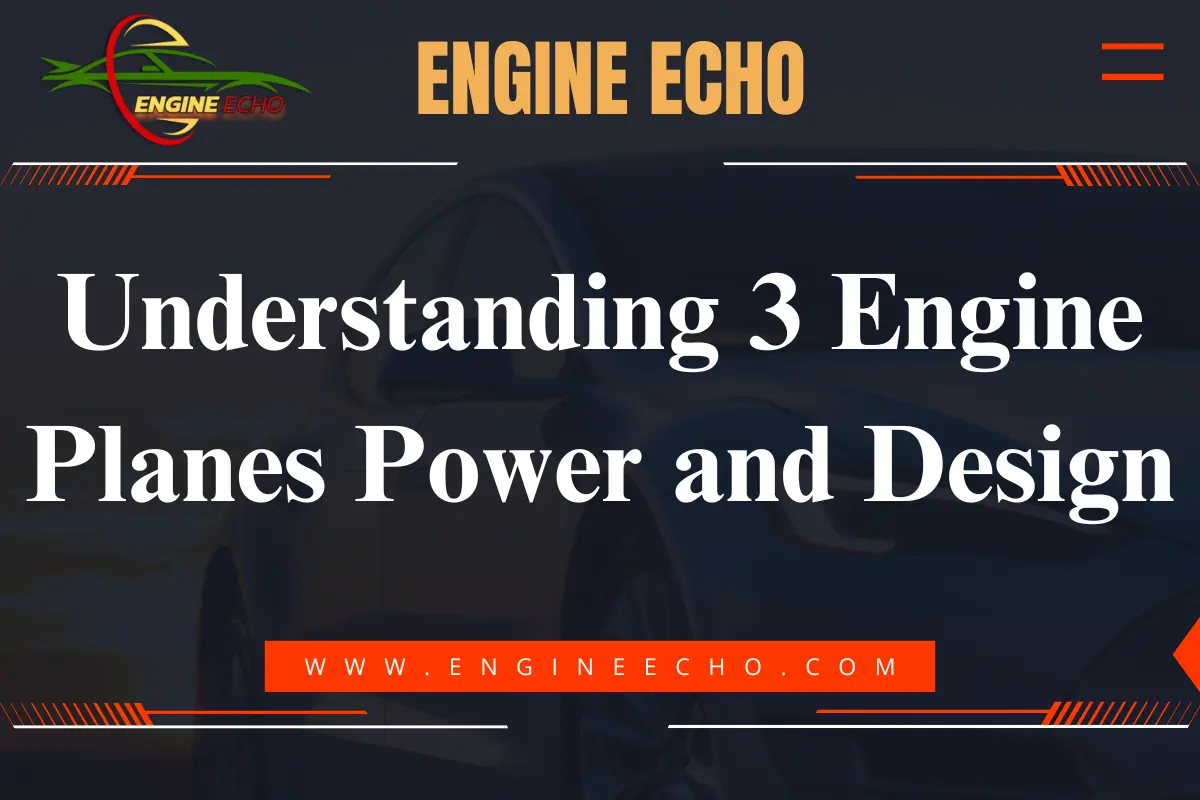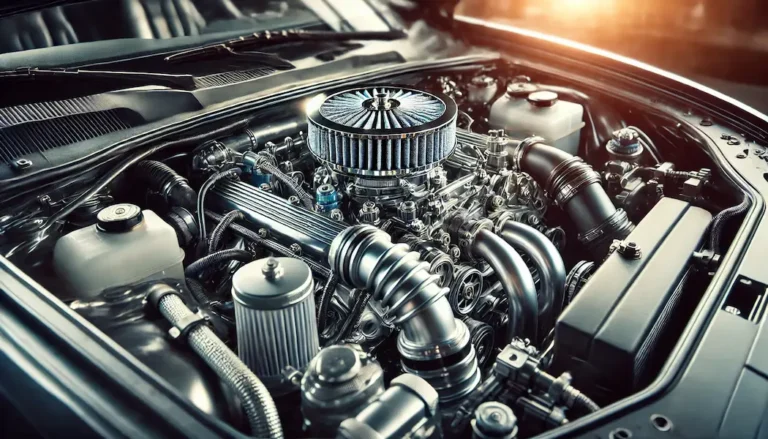Understanding 3 Engine Planes: Power and Design

Key Takeaway
Three-engine planes are a unique blend of power and design, offering enhanced performance and safety features that set them apart in the aviation industry.
Understanding 3 Engine Planes: Power and Design
Three-engine planes hold a special place in aviation history. They strike a balance between power and design that enhances both performance and safety. While most commercial aircraft have shifted towards two or four engines, the three-engine setup has its own set of advantages and quirks that I find incredibly interesting.
Introduction
If you’ve ever marveled at the design of an airplane or felt the thrill of takeoff, you might appreciate the engineering behind three-engine planes. These aircraft are not just about getting from point A to point B; they represent a fascinating chapter in aviation history. With their unique configurations and capabilities, three-engine planes offer a blend of power and reliability that can be both exciting and reassuring for travelers. As someone who loves aviation, I’m eager to explore what makes these planes stand out and why they deserve more attention in our discussions about air travel.
The Basics of Three-Engine Aircraft
Three-engine planes typically feature one engine on each wing and a third engine mounted at the rear, often on the tail or fuselage. This design allows for a significant boost in thrust-to-weight ratios, which means they can power through takeoffs and climbs with impressive agility. Plus, having that third engine adds a layer of safety—if one engine fails, the other two can still keep the aircraft flying, which is a comforting thought when you’re up in the air.
Historical Context of Three-Engine Aircraft
The history of three-engine planes dates back to the early days of aviation when engineers sought solutions to the challenges posed by engine reliability. The rise of three-engine aircraft can be attributed to several factors, including the quest for safety and the need for increased passenger capacity.
In the mid-20th century, as commercial aviation began to flourish, the demand for larger, more efficient aircraft grew. The introduction of three-engine designs offered a compelling solution, allowing airlines to operate larger aircraft capable of serving more passengers while maintaining acceptable safety margins.
One of the earliest examples of a successful three-engine design was the Lockheed L-1049 Super Constellation, which became popular in the 1950s. This aircraft combined advanced aerodynamic features with powerful engines, making it a favorite among airlines and a symbol of post-war travel.
Reflecting on this history, I’m reminded of the time I had the chance to fly on a McDonnell Douglas DC-10. The spacious cabin and smooth takeoff left a lasting impression on me. It was fascinating to think about how these aircraft have shaped air travel.
Advantages of Three-Engine Designs
Three-engine planes provide several notable advantages that can enhance operational efficiency and safety:
- Enhanced Performance: The extra engine provides a significant thrust boost, which can be especially helpful for larger aircraft or those operating in challenging conditions, like high altitudes or heavy payloads. This extra power can lead to shorter takeoff distances and improved climb rates, making these planes incredibly versatile.
- Safety Through Redundancy: One of the best things about three-engine planes is the redundancy they offer. If one engine fails, the other two can still keep you flying. This extra layer of safety is something I always appreciate when I’m on a flight—it’s nice to know that there’s a backup plan.
- Flexibility in Operations: Three-engine planes can often operate from shorter runways than their two-engine counterparts. This flexibility makes them suitable for airports with limited infrastructure or those located in remote areas. They can adapt to various environments, which is a huge plus for airlines.
- Cost-Effectiveness: While maintaining three engines might seem less economical than two or four-engine aircraft, advancements in engine technology have made three-engine designs increasingly cost-effective. Modern engines are more efficient and require less maintenance, allowing airlines to benefit from improved fuel economy and reduced operational costs.
- Noise and Emission Reduction: With the introduction of more efficient engines, three-engine planes have the potential to reduce noise and emissions compared to older aircraft designs. This aspect aligns with the aviation industry’s ongoing efforts to promote sustainability and reduce its environmental impact.
Notable Examples of Three-Engine Aircraft
Several aircraft have successfully utilized the three-engine design, each showcasing different strengths and features:
- McDonnell Douglas DC-10: One of the most famous three-engine aircraft, the DC-10 was known for its spacious interior and ability to carry significant cargo and passenger loads. Its unique trijet configuration contributed to its successful use in both commercial and cargo operations. The DC-10 was widely adopted by airlines in the 1970s and 1980s, becoming a mainstay in the aviation industry. My experience flying on one of these giants was truly unforgettable.
- Lockheed L-1011 TriStar: Another notable trijet, the L-1011 TriStar combined passenger comfort with advanced technology for its time. It featured innovations such as a wide cabin and quiet engines, making it well-regarded for its performance and reliability. The L-1011 was known for its fuel efficiency, which became a significant selling point for airlines during the oil crisis of the 1970s.
- Boeing 727: This narrow-body aircraft gained fame for its versatility and was widely used in the 1970s and 1980s. The 727’s three-engine setup provided a balance of power and efficiency, making it a favorite among airlines. With its ability to operate from shorter runways, the 727 opened up new routes and opportunities for air travel.
The Role of Three-Engine Planes in Cargo Operations
Three-engine aircraft have found a niche in cargo operations, where their unique capabilities can be fully utilized. Many cargo operators appreciate the ability to carry large loads over varying distances while maintaining operational flexibility. The trijet design allows for efficient loading and unloading processes, particularly when using specialized cargo configurations.
For example, the DC-10 Freighter version became a workhorse for cargo airlines, combining ample space with the reliability of its three-engine design. Similarly, the L-1011 TriStar also saw adaptations for cargo transport, highlighting the versatility of three-engine planes beyond passenger travel.
The Future of Three-Engine Planes
While advancements in engine technology have led many manufacturers to favor two or four-engine designs, three-engine aircraft still hold a niche in the aviation market. They are particularly useful in regions where longer runways are not feasible and in specialized cargo operations.
As aviation continues to evolve, I believe we might see a resurgence in three-engine planes. Ongoing innovations in aerodynamics and engine efficiency could lead to a new generation of three-engine designs that enhance safety and performance. The future of three-engine aircraft will depend on several factors, including market demand, environmental considerations, and advancements in materials and technology.
Challenges Faced by Three-Engine Aircraft
But it’s not all smooth sailing for three-engine planes. One major challenge is the growing emphasis on efficiency and sustainability in the aviation industry. Many airlines are shifting towards two-engine models, which are often more fuel-efficient and cost-effective. This trend has resulted in a decline in the production of new three-engine aircraft.
Additionally, regulatory requirements and safety standards have evolved, putting pressure on manufacturers to meet stringent guidelines. As a result, older three-engine models may face difficulties in compliance, potentially limiting their operational lifespan.
Conclusion
In conclusion, three-engine planes offer a unique blend of power and reliability that has proven effective in various aviation contexts. Their design provides enhanced performance, safety, and operational flexibility, making them a valuable option for airlines and cargo operators alike.
As someone who has enjoyed the experience of flying on these remarkable aircraft, I highly recommend considering them for your next trip, especially if you have the opportunity. The history and technology behind three-engine planes make them an intriguing aspect of aviation that deserves attention.
As the aviation industry continues to innovate, the role of three-engine planes may evolve, adapting to new challenges and opportunities. Whether for passenger transport or cargo, their unique configuration ensures they remain a vital part of the aviation landscape. Understanding their design, history, and capabilities can provide valuable insights into the diverse world of aviation and the ongoing quest for safer, more efficient air travel.
Ultimately, three-engine aircraft represent a significant chapter in aviation history, showcasing the ongoing innovation and adaptability of the industry. As we look to the future, it will be fascinating to see how three-engine designs evolve and whether they will reclaim a more prominent role in commercial aviation. Their legacy, marked by a balance of power and safety, will continue to inspire future developments in aircraft design and engineering.
FAQs
1. What are the advantages of three-engine planes compared to two-engine or four-engine aircraft?
Three-engine planes offer a unique combination of power, safety, and flexibility. They can operate effectively from shorter runways, provide redundancy in case of engine failure, and often feature enhanced performance due to their additional engine.
2. Are three-engine planes safer than two-engine planes?
While safety can depend on various factors, the redundancy offered by three-engine planes means that if one engine fails, the aircraft can still operate on the remaining two engines. This can provide an added sense of security for passengers and pilots alike.
3. What are some examples of popular three-engine aircraft?
Notable examples of three-engine planes include the McDonnell Douglas DC-10, Lockheed L-1011 TriStar, and Boeing 727. Each of these aircraft has made significant contributions to commercial aviation.
4. Why are three-engine planes less common today?
The aviation industry has seen a shift towards more fuel-efficient two-engine designs, which are often cheaper to operate. Additionally, advances in engine technology have improved the reliability of two-engine aircraft, leading to their increased popularity.
5. Will three-engine planes make a comeback in the future?
While it’s uncertain, there is potential for three-engine planes to return, especially as innovations in aerodynamics and engine efficiency develop. Their unique capabilities may find new relevance in specific operational niches.
4o mini
Thanks for checking out this article on EngineEcho.com! Hope you found this article: "Understanding 3 Engine Planes: Power and Design" helpful! If you liked it and want to dive into more car engine topics, head over to our homepage. There's always something new to discover in the world of engines. Enjoy your reading journey!
Check out our previous article: Where to Find 1UZ Engines for Sale






